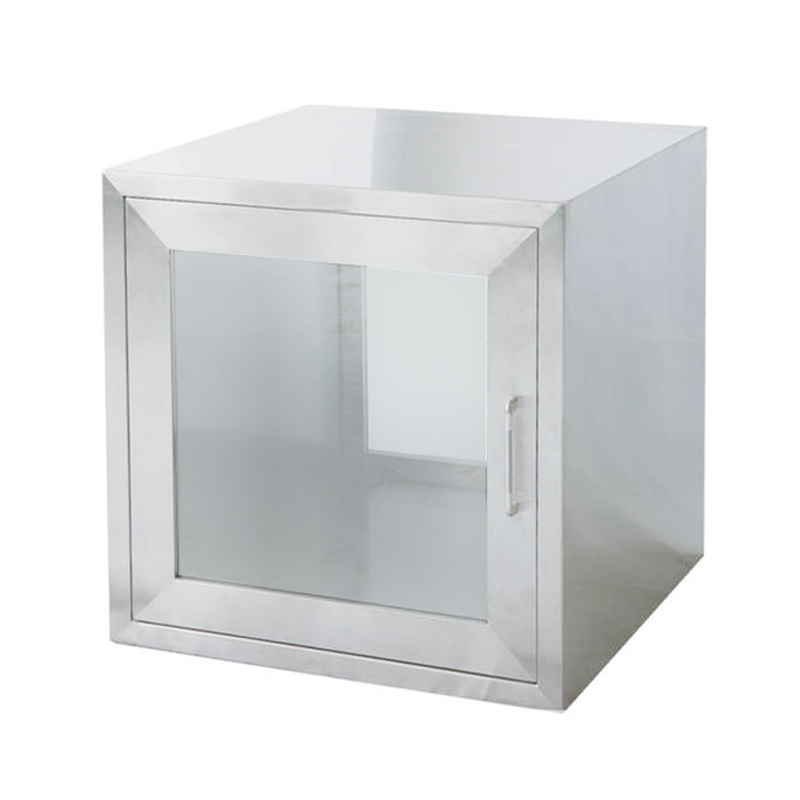

In industries ranging from healthcare to manufacturing, […]
In industries ranging from healthcare to manufacturing, efficiency, safety, and hygiene are paramount. One solution that has proven to be incredibly effective in achieving all these goals is the pass-through box. Designed to streamline workflows while maintaining stringent hygiene standards, pass-through boxes are versatile tools that offer a secure and efficient way to transfer materials, equipment, or even documents between different areas without the need for direct human contact.
A pass-through box is a small, enclosed system that allows the transfer of items between two rooms or environments without the need for physical interaction between the individuals on either side. It typically consists of two compartments, each located in a separate room or area. Items can be placed in one side of the box and transferred to the other side through a secure, often automated, mechanism. Some pass-through boxes may include features such as locks, interlocks, or even sterilization functions to ensure that items are not only safely passed through but also remain uncontaminated.
The most common materials used to construct pass-through boxes are stainless steel or other durable, easy-to-clean materials that are resistant to corrosion and can withstand rigorous cleaning protocols. Depending on the application, pass-through boxes may be equipped with additional features like UV light sterilization, HEPA filtration systems, or touchless controls to maintain high levels of cleanliness and safety.

One of the primary areas where pass-through boxes are used is in healthcare facilities, particularly in hospitals, laboratories, and pharmaceutical production areas. In environments where maintaining a sterile environment is crucial, pass-through boxes provide a way to transfer medical supplies, samples, and equipment between different rooms without exposing them to contaminants.
For example, in a hospital’s cleanroom or operating theater, a pass-through box can be used to transfer surgical instruments or medications without risking contamination. Similarly, in laboratories where hazardous materials or delicate experiments are being handled, pass-through boxes allow researchers to send materials from one area to another without compromising the integrity of the work environment.
Pass-through boxes in healthcare settings are often equipped with features such as UV sterilization or air filtration systems to further ensure that anything passing through remains free from pathogens. These added functions make them a key component in preventing cross-contamination and ensuring the safety of both patients and medical staff.
In the food industry, hygiene is crucial to prevent contamination and ensure product safety. Pass-through boxes are commonly used in food processing and packaging areas to transfer raw ingredients, finished products, or packaging materials between different production stages. In environments where strict hygiene standards are required, these boxes provide a secure and sterile method of handling materials while minimizing human contact.
For instance, a pass-through box may be used to move food products from a cleaning station to a packaging area. This eliminates the need for workers to touch the food directly, reducing the risk of contamination. Additionally, features like sterilization systems in the box can help eliminate bacteria and other harmful microorganisms, further safeguarding the product.
Manufacturing and Cleanrooms
In industries such as electronics manufacturing, automotive assembly, and biotechnology, pass-through boxes are vital for transferring sensitive components or materials between cleanrooms, assembly lines, or laboratories. These environments often require high levels of cleanliness to ensure the quality and functionality of the final products. Pass-through boxes help to maintain this level of cleanliness by preventing direct contact between workers and materials.
For example, in the manufacturing of microchips or delicate electronics, the transfer of parts through pass-through boxes ensures that no dust or contaminants are introduced into the production process. By isolating different areas of the production facility and preventing cross-contamination, pass-through boxes help reduce defects and improve overall product quality.
In pharmaceutical manufacturing, maintaining a controlled environment is essential for ensuring the safety and efficacy of drugs. Pass-through boxes are commonly used in pharmaceutical production and storage areas to move materials such as raw ingredients, samples, or final products between different rooms whilstrict cleanliness protocols.
For example, a pass-through box with a UV sterilization feature can help eliminate bacteria or viruses that may be present on the materials before they are moved into sterile production areas. These systems help maintain the integrity of pharmaceutical products and are an essential part of the quality assurance process in drug manufacturing.
The primary advantage of pass-through boxes is their ability to enhance hygiene and safety. By providing a contactless transfer mechanism, pass-through boxes reduce the risk of contamination between different areas. This is particularly important in sectors such as healthcare, food production, and pharmaceuticals, where contamination can lead to serious health risks or product recalls.
Pass-through boxes streamline workflows by eliminating the need for manual transfer of items between different rooms or areas. This leads to faster, more efficient operations, as workers do not need to physically move between areas to deliver materials. As a result, the overall production or service delivery process becomes more efficient, saving both time and resources.
Many pass-through boxes are equipped with security features such as locks or interlocking mechanisms, ensuring that items can only be accessed by authorized personnel. This adds an extra layer of security to sensitive materials, whether they are medical supplies, food products, or proprietary manufacturing components. By controlling access to the items being transferred, pass-through boxes help protect valuable assets from theft or tampering.
Pass-through boxes come in a variety of designs and configurations to meet the specific needs of different industries. Some are simple, manual systems, while others are fully automated and equipped with advanced features like sterilization or filtration. This versatility makes pass-through boxes an ideal solution for a wide range of applications.
Our new models offer superb design;competitive prices and their new features give them distinct advantages over similar products from other manufacturers.